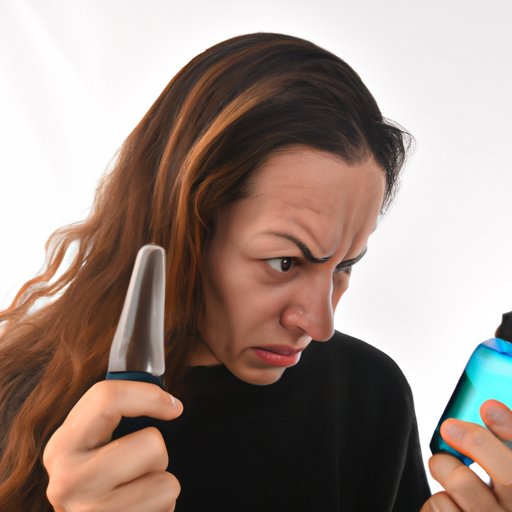
I. Introduction
If you’ve ever experienced an itchy scalp or flakes on your hair, chances are you’ve wondered whether you have lice or dandruff. While the two may seem similar, they are actually very different conditions that require different treatments. In this article, we’ll explore the key differences between lice and dandruff, and help you identify which one you have. We’ll also provide tips and advice on how to get rid of both lice and dandruff for good.
II. Head Scratching for Answers: Understanding the Difference between Lice and Dandruff
The causes of lice and dandruff are different. Lice are parasitic insects that feed on human blood, while dandruff is a scalp condition caused by overactive oil glands. Both conditions can cause an itchy scalp and visible symptoms, but there are key differences between them. Lice, for example, can be seen with the naked eye and require specialized treatments, while dandruff is often treated with a medicated shampoo or topical ointment.
III. Unwelcome Guests: How to Identify and Eliminate Lice from Your Life
Lice are highly contagious and can spread quickly from person to person, especially in close quarters like schools and daycare centers. Signs of a lice infestation include a tickling feeling on the scalp, visible nits (lice eggs) or insects on the hair shafts, and a rash on the back of the neck or behind the ears. Treatment options for lice include over-the-counter shampoos, prescription medications, and home remedies like olive oil or tea tree oil. To prevent future lice infestations, it’s important to avoid sharing items like hairbrushes, hats, and towels, as well as regularly washing bedding and clothing in hot water.
IV. Flake-Out or Freak-Out: Deciphering Whether You Have Lice or Dandruff
Distinguishing between lice and dandruff can be tricky, but there are some key differences to look for. Dandruff flakes tend to be smaller and less visible than lice and nits, and can often be easily brushed away. Lice, on the other hand, are visible to the naked eye and often seen crawling on the hair shafts. While both conditions can cause itching, lice bites may cause more intense itchiness and even a small rash.
V. The Lowdown on Lice: How to Get Rid of the Pesky Parasites for Good
Getting rid of lice requires a multi-step approach that includes treating the hair, the home, and any personal items that may be infested. It’s important to use a specialized lice comb to remove both the lice and nits from the hair shafts, and to follow up with a medicated shampoo or prescription medication to kill any remaining lice. It’s also important to wash bedding and clothing in hot water and vacuum any furniture or carpets that may have come into contact with lice.
VI. Dandruff or Dryness? Here’s How to Tell the Difference, Once and For All
Dry scalp and dandruff are often confused, but there are some key differences to look for. Dry scalp is caused by a lack of moisture in the skin, and can be treated with a moisturizing shampoo or topical ointment. Dandruff, on the other hand, is caused by overactive oil glands and may require a medicated shampoo to treat. Dandruff flakes are usually larger than dry scalp flakes and may be accompanied by redness or inflammation.
VII. Conclusion
Distinguishing between lice and dandruff is important for proper treatment, and can help prevent the spread of both conditions. By understanding the key differences between lice and dandruff, you can take the necessary steps to find relief and prevent future outbreaks. Remember to always follow up with a healthcare provider if you have any concerns or questions about your scalp condition.





